 By Julio Díaz García, Sapienx Automation.
By Julio Díaz García, Sapienx Automation.
The Problem
Using the KNX standard allows us to design effective and comprehensive automation solutions for many different types of project. On many occasions however, due to size and/or complexity, certain parts of a project may have been implemented using other technologies. We then have to integrate these into a single system that is as homogeneous as possible, so that, for example, all of the functions can be visualised from a single point.
In such cases, we truly earn the title of ‘systems integrator.’ This is because we do not only integrate lighting, security or shutters with KNX, but we must associate KNX variables with other standards such as BACnet or Modbus, to name but two of the most common other standards worldwide. This article will describe what is, in my opinion, the best way to integrate multiple technologies into a single standard management platform, in order to be able to visualise, link and historise all of the control variables of a project.
The Solution
At first glance, it may seem that the proper and most direct solution is to use gateways between the different technologies. However, indiscriminate use of gateways is not justified in many cases for economic or technical reasons: on the one hand the cost can be very high if we integrate different technologies at various points in the installation, and on the other, data traffic would be increased unnecessarily.
An alternative is to consider the well-known concept of the ‘automation pyramid’. This is based on the integration of all of the technologies over an Ethernet network using IP interfaces, and managing all of the control variables using BMS (Building Management System) software. The automation pyramid thus defines three levels:
1) Field.
2) Automation (Ethernet interface).
3) Management.
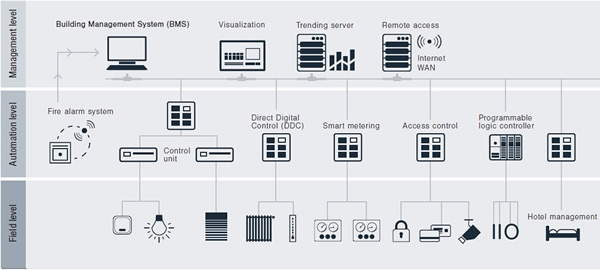
For the following example, I am going to use the NETxAutomation BMS Server 2.0, as already described my previous articles of November 2015 and January 2016.
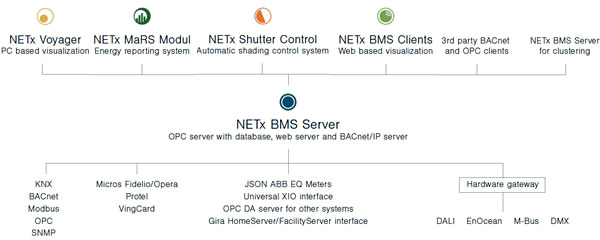
Adding Variables
In this case, we will add to the KNX variables that are already integrated by the NETxAutomation BMS APP for ETS (see November article) some BACnet/IP, SNMP and some Modbus TCP data points, to form a complete system with HVAC control, metering, LAN monitoring, lighting and blind automation.
The KNX integration was very easy to do, as demonstrated in the previous articles. To integrate BACnet is even easier. For the NETxAutomation BMS Server, the integration of BACnet variables is automatic, as it uses a self-discovery tool, as shown in the images below:
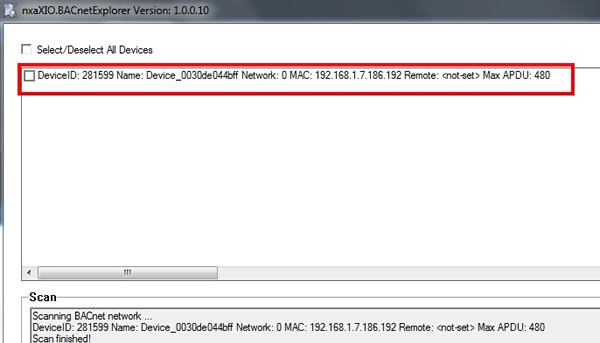
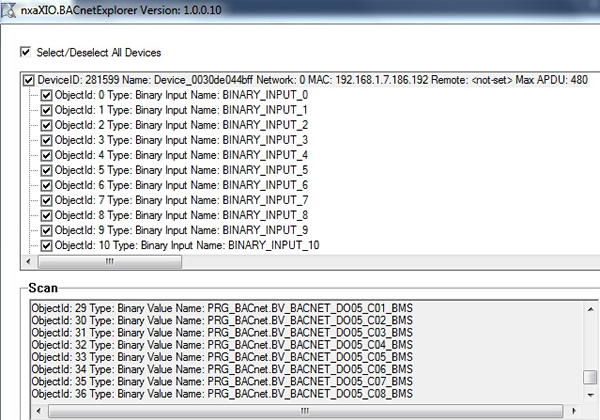
After all of the configuring, we can see all of the available devices (IP gateways in the different technologies).
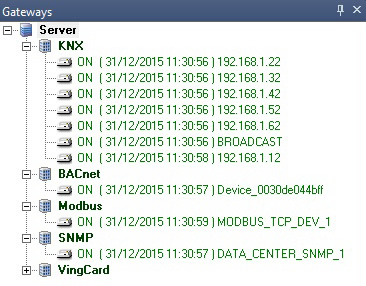
We can also see all of the different data points from KNX, BACnet, Modbus and SNMP systems in a structured item tree, as shown below:
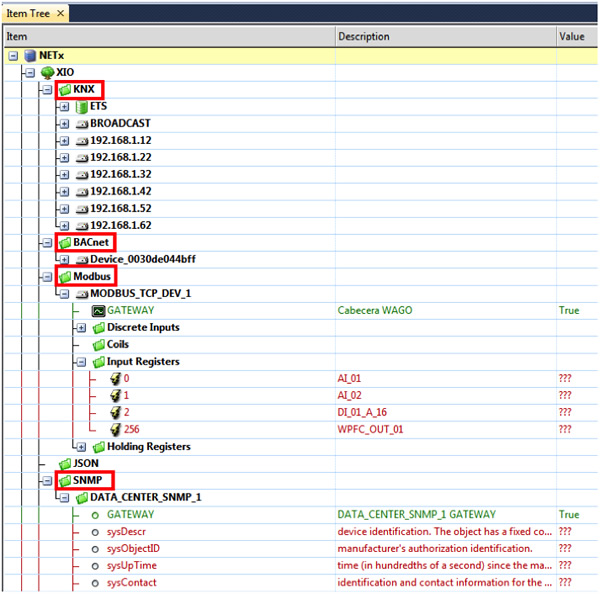
Further Manipulation
Now, we can consider all of these items as ‘siblings’, so we can do several things with them, such as virtual links between BACnet and KNX variables (as in the image below), complex tasks using (LUA) scripts or just a visualisation of several items from different technologies on the same screen.
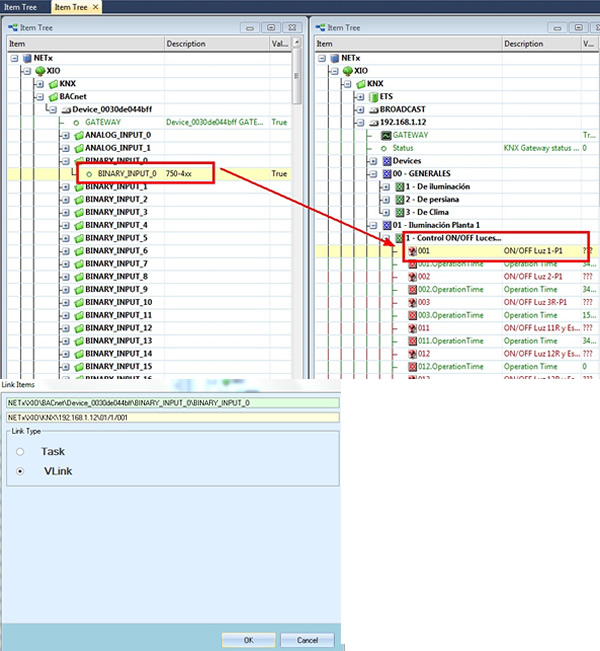
Another advantage of the item tree that contains data points from different technologies is that we can do complex logic between them using the X-LOGIC module, as shown in the following image:
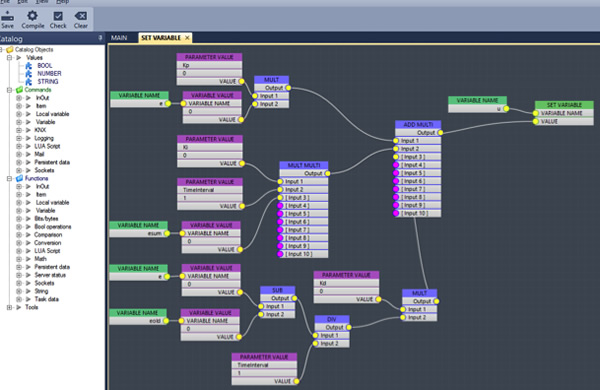
Conclusion
When we have to solve complex installations where KNX is not the only technology present, every data point should be integrated in a common (software) platform using IP interfaces for every technology. This strategy follows the automation pyramid principle and permits the twinning of all the data points in a common item tree, in order to link, historise and visualise the whole project on a common platform.
The best BMS solutions should be able to acquire data from diverse standard technologies that use ‘native’ drivers for building automation, access control, hotel management, etc. Also other protocols should be integrated using OPC servers. And it should be capable of serving this data to different clients for functions such as web visualisation, PC visualisation, energy management, etc.
Julio Díaz García is the Owner of Sapienx Automation. He is an Engineer and KNX International Award-winning KNX++ Tutor. Sapienx Automation provides engineering, training and consultancy services for smart buildings, smart metering and smart cities.













